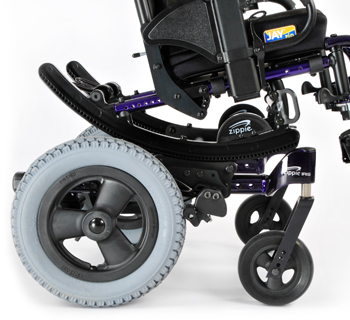Delt:
Take it offline!
This Education in Motion resource is also available as a printable PDF.
Download PDF
When I shared this month’s EIM spokes topic with a colleague (himself an unapologetic powered wheelchair geek), the response was ‘that sounds painful.’
I am undeterred. Stay with me for a few paragraphs.
Spokes act as the bridge between a wheelchair user and the ground. Understanding their mechanics, what makes one type different from another enables informed choices for the best performance and use of budget resources.
A bit of physics: How spokes work in a wheelchair wheel
Spokes need to be under tension to hold a weight, much like a rope. As the wheels turn, the bottom spokes become compressed and the upper spokes are stretched. In order for the system to work, the spokes need to keep enough tension so that they are still a little stretched even under this compression. Otherwise they would break, bending the wheel rim.
At the end of each spoke there is ‘nipple’ where it meets the rim. Turing the nipple tightens the spoke, that is, increases the tension on that spoke.
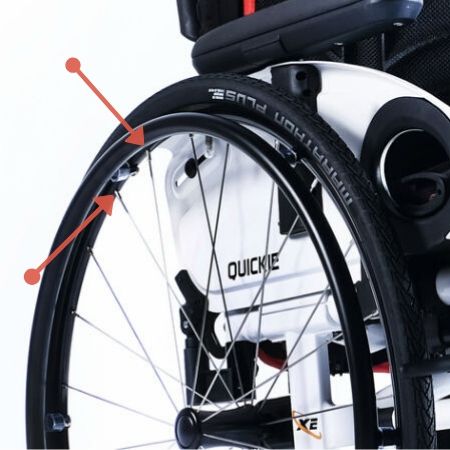
Spokes attach on the outside of the hub. For those brand new to wheelchair mechanics, the hub is the metal cylinder at the centre of the wheel which the axle goes through.
However, the spokes line up one directly behind each other where they terminate in the middle of the wheel rim. This creates a ‘V’ shape when observed straight on. Tightening the right side spoke pulls the rim towards the right a tiny amount and tightening the left side pulls it to the left. Careful adjustment allows the rim to be set to a true middle position, for the most efficient propulsion and tracking of a wheelchair.
What is the difference in spoke options for manual wheelchair users?
Installing (‘lacing’) spokes in a cross pattern increases the strength of a wheel, particularly against twisting forces. It is a well-established spoke option because it meets moderate to high durability needs at low cost. Cross-pattern metal spokes are often a default rear wheel option on wheelchairs.
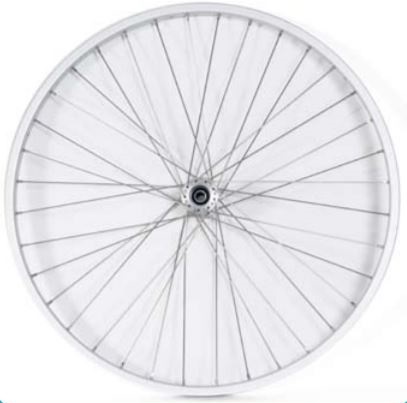
Radial style radial spokes have a minimalistic aesthetic, and are lighter. The compromise is that they are not as durable as the cross-spoked version, reflected in a lower user weight capacity.
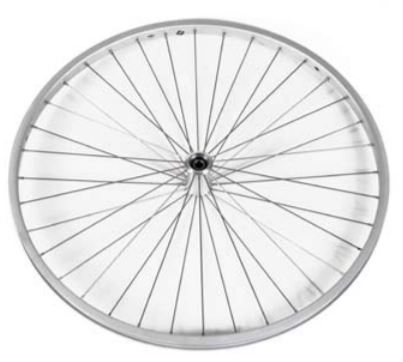
Lightweight and super lightweight spoked wheels also have a radial style, but have also been designed with componentry throughout to reduce weight. They are the lightest option, making them easy to lift and manoeuvre, so are often a good choice for frequent lifting in and out of a car. These are a higher cost option, and are necessarily not quite as robust as heavier wheels, much like ultralight weight spoked racing bicycle wheels.
Some spokes, like those in a Spinergy wheel, use a semi-flexible fibre material and upgraded hub design for high durability and increased comfort. Aesthetically they offer coloured spoke options and fewer spokes required to maintain the wheel’s structure. Whilst not quite as light as the super lightweight spoked wheels, they are lighter than standard steel universal cross-spoked wheels.
These wheels have a more expensive manufacturing process than metal spoked wheels, and therefore are a premium option on active user wheelchairs (link to Sunrise Medical ultralightweight wheelchairs). Due to their durability are a popular upgrade for active clients and those who put their wheelchair through heavy use.
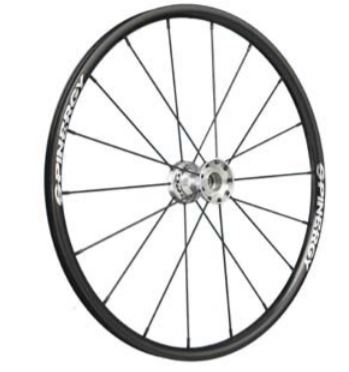
‘Mag wheel’ type spokes require no maintenance as the spokes are moulded as an integral part of the wheel, bonded permanently to the rim. They are also the most classic type of spoke, having been used since at least 2000 B.C.E. in a wooden format to move heavy loads. A museum in Tehran actually has one of about this age.
Mag wheels can be heavy and flex in large diameter self-propel wheels, but work very well in small transit wheels. For example, on the Quickie Iris tilt-in-space so carers and family members can use the wheelchair confidently over a variety of surfaces.
